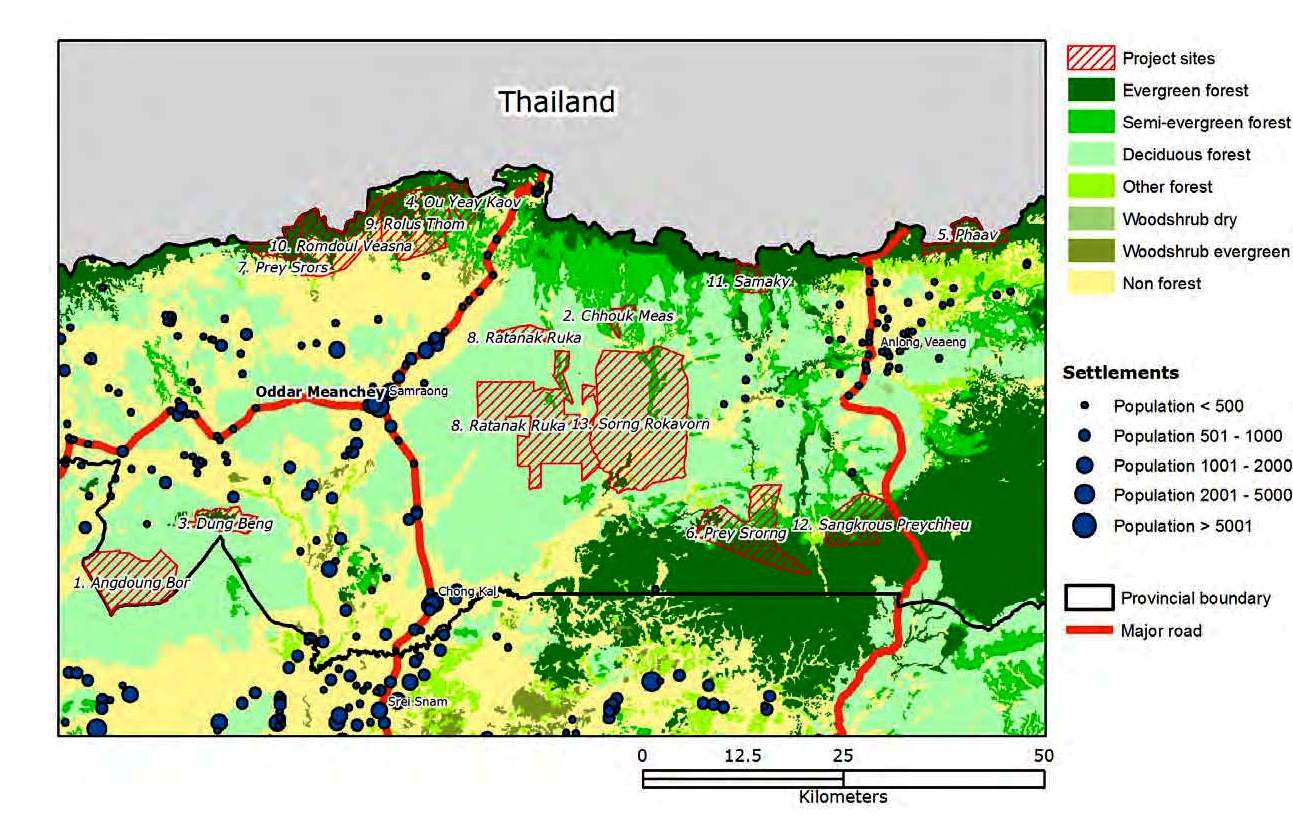Ben Doherty
December 4, 2010
Reclaiming the land ... monks in their forest. They want to earn money from rich countries by conserving the forest to sequester carbon. Photo: Ben Doherty
A UN program is intended to help the climate and support locals.
ODDAR MEANCHEY, CAMBODIA: The forest surrounding the Sorng Rukavorn monks' rural pagoda in northern Cambodia has forever been ''theirs''. They have always known the families in the neighbouring villages who, like them, have depended on the forest for food, for timber, and for a living. They have long understood their forest's boundaries, its plant and animal life, its cycles of wet and dry, of fire and regeneration.
But they have never officially owned it. Until now. Having spent nearly two years winning legal control of 18,000 hectares of forest, they are now able to lock it away from logging interests and other encroachments, and rehabilitate areas of forest previously cleared.
The carbon that saves, they hope, may soon be for sale. They want to be players on a global carbon market.
''Any revenue from the forest will be important for the people here, and for Cambodia,'' says a monk, Lee Ragana.
''When the revenue comes in, we can use the money to build infrastructure, to build schools to teach the children English, and to build better roads. And we can improve the management of the forests. We will use the money to educate farmers in better land practices and technical improvements.
''We will be able to supply patrols with trucks and equipment, pay the patrollers for more regular patrols, do more fire suppression and replanting.''
The Sorng Rukavorn monks are on the cusp of entering what is still a voluntary carbon market, in preparation for a time industrialised countries legislate to force polluters into offsetting the carbon they produce.
They aim to be a United Nations-recognised Reducing Emissions from Deforestation and Forest Degradation (REDD) project, in which governments and companies in industrialised nations that cannot cut their own carbon emissions cheaply, pay communities in poor countries to reduce emissions on their behalf, usually by not cutting down trees.
Already, yellow and green signs mark the monks' land as a ''community forest''. Regular patrols are conducted by volunteers to ensure that trees are not being felled illegally, or land cleared for farming. The Sorng Rukavorn monks' community forest is one of 13 sites in the Oddar Meanchey province on Cambodia's northern border with Thailand.
Combined, the sites preserve nearly 68,000 hectares of forest land and, maintained over 30 years, are expected to sequester 7.1 million tonnes of carbon. Within months they will seek a carbon buyer.
But even before a dollar has found its way back to the monks and other communities preserving Cambodia's forests, they feel they have won a victory in taking control of land they have regarded as theirs for generations.
''Before we had the community forest, people from outside would go into the forest and cut down trees illegally, clear land, and the people who depended on that forest had no right to stop them. Now we feel we own this land, we have control, and we can stop it being used badly,'' Lee says.
Kurt MacLeod, the vice-president of Pact, a non-government organisation helping Oddar Meanchey's community forests ''bring their carbon to market'', says REDD projects, in addition to saving carbon, will bring enormous benefits and development to the poor communities running them.
''The communities aren't getting any of their REDD carbon revenues at this point but that will start to happen, probably in 2011, because we're expecting to be able to sell their carbon this year,'' MacLeod says.
''As soon as legislation is enacted [in wealthy countries], there are going to be private-sector companies looking for validated REDD projects. The demand in five years will be much higher than supply.''
The Oddar Meanchey community forest project is seeking registration with the two standards of the nascent carbon market: the Voluntary Carbon Standard, which will approve the carbon-measuring method, and the Climate, Community and Biodiversity Alliance, which measures social and biodiversity improvements.
Industrialised countries see enormous value in paying poorer countries to preserve forests on their behalf. Germany, France, Norway, the US, Britain, Australia and Japan pledged $US4 billion towards REDD initiatives at the last round of climate talks in May.
But how much carbon will be worth on the market of the future is still unclear.
As well, there is the issue of measuring the carbon ''sequestered'' in forests, and how that might be affected by its growth, climate change or unforeseen events such as fire.
There is concern, too, in countries such as Cambodia where corruption is rife, that legislators will look for a cut, and that REDD dollars will be diverted from the communities who own and maintain the forests into government coffers.
Cambodia has a poor record in forestry. It has experienced some of the most rampant deforestation on the planet. More than 7 million hectares of forest, 39 per cent of the entire country's land, has been sold for logging. Since 1970, primary forest cover in Cambodia has been reduced from 70 per cent to just 3.1 per cent.








0 comments:
Post a Comment